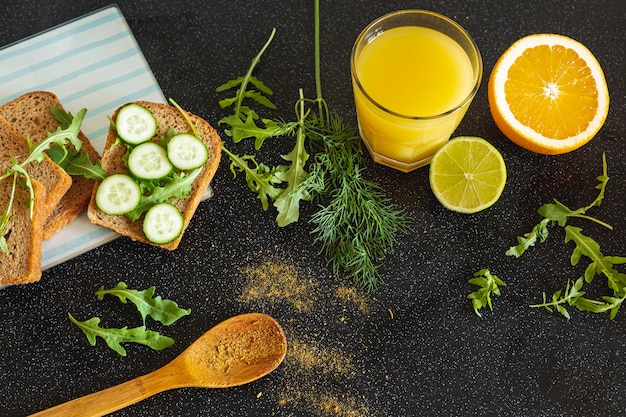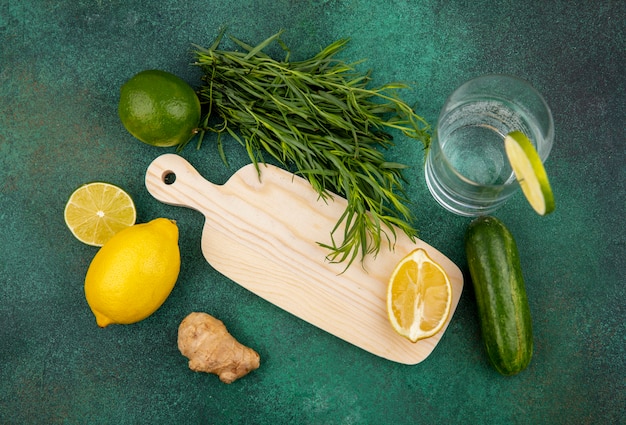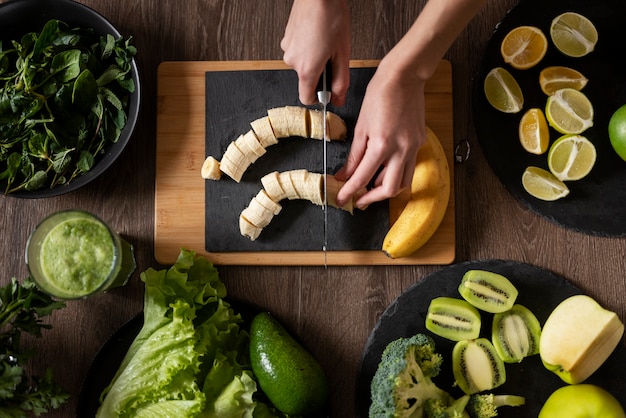Let me tell you, there's something utterly magical about lemongrass. Just the scent – that fresh, citrusy aroma, a touch of green – it can instantly transport you to a bustling Asian market. It's not just the smell, though. Lemongrass has this incredible way of transforming a dish, adding a depth and complexity that's hard to resist. It was love at first bite for me, and I've been obsessed ever since.
I've always been a bit of a foodie, always up for trying new things, so when I first encountered lemongrass, I was hooked. It was like discovering a whole new world of flavour. And the best part? It's so versatile, you can use it in everything from curries to soups to even desserts! I've spent years exploring lemongrass's potential, and I'm here to share my passion and put together this ultimate guide to lemongrass cooking.
I'll walk you through everything you need to know, from choosing the right lemongrass to the best ways to use it in your cooking. I'll also share some of my favourite recipes and techniques, so you can start creating delicious lemongrass dishes at home.
(Part 1) Lemongrass 101: The Basics

Before we dive into all the exciting recipes, let's start with the basics. You see, understanding lemongrass is like understanding any good ingredient, it's all about getting to know its personality.
What is Lemongrass?
Lemongrass, as the name suggests, is a type of grass. But, it's not just any grass, it's a fragrant one! The part we use in cooking is the stalk, which has a unique flavour that's both citrusy and subtly grassy. Think of it like a citrus fruit with a hint of green, a flavour that's both familiar and unexpected. It's a staple in many Asian cuisines, especially Thai and Vietnamese, and has recently become popular all over the world, making its way into everything from soups to cocktails.
The magic of lemongrass lies in its essential oils, which give it that powerful citrusy aroma. These oils are what give lemongrass its distinctive flavour and are also responsible for its many medicinal properties.
Choosing the Right Lemongrass
The key to delicious lemongrass dishes is starting with fresh, high-quality lemongrass. When you're at the market, here's what to look for:
- Look for bright green stalks, they should be firm and not limp. A limp stalk means it's lost its moisture and the flavour will be less intense.
- Avoid any stalks with brown or dry spots, these are signs of old lemongrass. Fresh lemongrass should be bright and vibrant.
- Check the base of the stalk, it should be firm and not mushy. The base of the stalk is the root, and a mushy root means the lemongrass is starting to spoil.
You can usually find lemongrass in the produce section of most supermarkets, or even better, at Asian grocery stores. These stores often have a wider selection and the lemongrass is usually fresher.
Storing Lemongrass
Once you've got your lemongrass home, you'll want to make sure it stays fresh for as long as possible. Here's what I do:
- Wrap the lemongrass stalks in a damp paper towel and store them in a plastic bag in the refrigerator. The paper towel helps to keep the lemongrass moist and prevents it from drying out.
- For longer storage, you can freeze the lemongrass. Simply chop the stalks into 1-inch pieces and freeze them in a freezer bag. This way, you can keep the lemongrass flavour in your kitchen for longer!
(Part 2) Mastering the Art of Prepping Lemongrass

Now, you've got your beautiful lemongrass, but before you can start cooking with it, you need to prep it. Don't worry, it's not as complicated as it seems. It's actually quite simple once you get the hang of it!
Cleaning and Trimming Lemongrass
First, give your lemongrass a good wash. I usually use a scrub brush to get rid of any dirt or debris. You might be surprised how much dirt can cling to those stalks! Then, you'll need to trim off the top and bottom parts of the stalk. The top part is usually dry and tough, and the bottom part is the root, which is woody and can be bitter. You'll only want to use the tender, pale-green part of the stalk.
Smashing and Bruising for Deeper Flavor
This is where the magic happens. Smashing or bruising the lemongrass releases its oils, creating a more intense flavour that really shines through in your dishes. Think of it like squeezing a citrus fruit – you're releasing those aromatic oils that give lemongrass its unique character. You can smash it with the back of a knife, or even use a meat mallet. I sometimes use a mortar and pestle for that extra touch of flavour. Just remember, the more you smash it, the stronger the flavour!
Mincing, Chopping, and Slicing
Once the lemongrass is prepped, you can mince it, chop it, or slice it depending on the recipe. Sometimes, I'll slice it thinly to add a bit of texture to a dish, or I'll chop it roughly for a more intense flavour. If you're making a soup, you might want to leave the lemongrass whole so it can infuse the broth. Ultimately, it depends on what you're making, so experiment and see what works best for you.
Lemongrass Paste: A Flavor Powerhouse
Here's a little secret I learned from my grandma, lemongrass paste. It's so easy to make and adds an incredible depth of flavour to soups, curries, and even sauces. All you need is some finely chopped lemongrass, garlic, ginger, and chili (if you like some heat). Blend everything together until it forms a smooth paste. You can keep this paste in the refrigerator for up to a week, or freeze it for longer storage. It's a great way to have lemongrass flavour on hand whenever you need it.
(Part 3) Cooking with Lemongrass: Unveiling the Flavors

Okay, now we're getting to the fun part! It's time to explore the exciting world of lemongrass recipes. It's incredible how this one simple ingredient can be used in so many ways, adding a burst of flavour and aroma to all sorts of dishes.
From Curries to Soups: A Lemongrass culinary adventure
Lemongrass is a true star in Asian cuisine. Think of its vibrant presence in Thai green curry, Vietnamese pho, or even Indian curries, adding a unique citrusy kick. But it's not just limited to those regions. Lemongrass can also be used in stir-fries, marinades, and even desserts. Its versatility truly knows no bounds!
Infusing Your Dishes with Lemongrass
There are a few different ways to infuse your dishes with lemongrass. Here are some of my favorite techniques:
- Simmering: This is a classic way to extract the flavour of lemongrass. Simply add the lemongrass to your broth, stock, or sauce and simmer until it releases its aroma. You can remove the lemongrass after cooking or leave it in for a more intense flavour.
- Sautéing: Sautéing lemongrass in oil or butter at the beginning of cooking helps to release its aromatic oils and infuse the dish with a bright, citrusy flavour. This is a great technique for stir-fries and curries.
- Grilling: You can also grill lemongrass for a more intense, smoky flavour. Just char the stalks over an open flame for a few minutes, then use them in your dish. This is a great way to add a touch of smokiness to grilled meats and vegetables.
- Infusing Liquids: Lemongrass adds a refreshing and vibrant twist to drinks. You can infuse it in water, tea, or even cocktails. Just steep the lemongrass in your chosen liquid for a few minutes, then strain it out.
Lemongrass and Other Flavors: A Perfect Blend
Lemongrass pairs beautifully with a wide variety of other flavors. It loves to tango with garlic, ginger, chili, coconut milk, fish sauce, and even lime juice. These ingredients work together harmoniously to create complex and delicious flavours that will tantalize your taste buds. Think of it as a symphony of flavours, where lemongrass plays a key role in creating a harmonious blend.
(Part 4) My Favourite Lemongrass Recipes: A Taste of Inspiration
I've been lucky enough to have travelled to many parts of Asia and tried so many incredible lemongrass dishes. It's almost impossible to pick just a few, but I'm going to share some of my favourites that you can easily make at home. These are recipes that capture the essence of lemongrass and showcase its versatility in the kitchen.
1. Tom Kha Gai (Thai Coconut Soup with Chicken)
This soup is a classic for a reason. It's rich, creamy, and packed with flavour. The lemongrass adds a bright, citrusy note that cuts through the richness of the coconut milk. The chicken is tender and juicy, and the soup is topped with fresh herbs and chilies for a touch of heat. You can find a recipe on my blog for this beauty!
2. Lemongrass Chicken Skewers
These skewers are perfect for a summer barbecue or a quick and easy weeknight dinner. The lemongrass marinade adds a delicious flavour to the chicken, and the skewers are grilled to perfection. A burst of flavour with each bite, it's simply amazing! The marinade is a simple blend of lemongrass, garlic, ginger, and soy sauce, and it's sure to be a crowd-pleaser.
3. Lemongrass and Ginger Stir-Fry
This stir-fry is a great way to use up your favourite vegetables. The lemongrass and ginger add a delicious flavour, and the stir-fry is cooked quickly and easily. A dish perfect for a busy weeknight, full of flavor and freshness. You can use any vegetables you like, but I love to use a mix of broccoli, carrots, and bell peppers. The stir-fry is cooked in a simple sauce made with soy sauce, oyster sauce, and a touch of honey.
4. Lemongrass Tea
A refreshing and soothing drink that is perfect for any time of day. The lemongrass adds a touch of citrus and a calming aroma to the tea. You can make this tea with fresh or dried lemongrass. A warm cup of lemongrass tea on a cold day is like a hug from the inside! Just steep the lemongrass in hot water for a few minutes, then strain it out and add a touch of honey or sugar to taste.
5. Lemongrass and Coconut Ice Cream
A unique and delicious dessert that is sure to impress. The lemongrass adds a subtle flavour to the coconut ice cream, and the dessert is perfect for a warm summer evening. I love the creamy texture and the refreshing citrus notes, it's a real taste sensation! You can make this ice cream at home or buy it pre-made. Serve it with fresh berries or a drizzle of honey for an extra special treat.
(Part 5) Unlocking the Culinary Secrets of Lemongrass: Pro Tips and Tricks
Now, you're equipped with the basic knowledge, and you've been inspired by some amazing recipes, but there are a few more tricks up my sleeve to make your lemongrass cooking even more delicious.
The Art of Balancing Flavors
Lemongrass is a powerful flavour, so it's important to use it in moderation. Too much can overpower the other flavours in your dish. I recommend starting with a small amount of lemongrass and then adding more to taste. It's all about finding that perfect balance where the lemongrass shines without dominating the other ingredients.
The Magic of Toasting
Tossing lemongrass in a hot pan for a few minutes before adding it to a dish can really enhance its flavour. The heat helps to release the oils and deepen the citrusy notes. Just be careful not to burn it! You'll know it's ready when it's fragrant and slightly softened.
Beyond the Stalks: Using Lemongrass Leaves
You can also use the leaves of the lemongrass plant for a more subtle flavour. These are particularly good for infusing oils or adding a delicate touch to your dishes. They have a more delicate flavour than the stalks, so they're perfect for dishes where you want a subtle hint of lemongrass. Just like the stalks, they are best used fresh for a more vibrant flavour.
Lemongrass Infused Oils: A Culinary Delight
One of my favourite techniques is infusing oil with lemongrass. It's surprisingly simple and adds a fantastic flavour to your dishes. Simply heat some oil with the lemongrass until the aroma is infused into the oil, then strain the oil to remove the lemongrass. This lemongrass infused oil can be used for everything from drizzling over salads to flavouring soups. It adds a subtle lemongrass flavour that elevates the whole dish.
Here's a simple recipe for lemongrass infused oil:
| Ingredients | Instructions |
|---|---|
| 1 cup vegetable oil (or olive oil) | Heat the oil in a saucepan over medium heat. Add the lemongrass stalks and cook for 5-7 minutes, or until the oil is fragrant and the lemongrass is slightly softened. |
| 2-3 lemongrass stalks, roughly chopped | Remove the pan from the heat and let the oil cool slightly. Strain the oil through a fine-mesh sieve into a clean jar. Discard the lemongrass. |
Store the lemongrass infused oil in a cool, dark place for up to 2 weeks.
(Part 6) Lemongrass: More Than Just a Culinary Star
Lemongrass is not only a culinary superstar, it also has a few other things going for it.
Beyond the Kitchen: Lemongrass's Medicinal Properties
Lemongrass has been used for centuries in traditional medicine. It has antibacterial and antifungal properties, and it is often used to treat digestive problems, respiratory issues, and even skin infections. That's why it's sometimes used in traditional remedies and even in some natural beauty products.
A Beautiful and Versatile Plant
Lemongrass is also a beautiful plant that can be grown in your garden or indoors. It's quite easy to grow and adds a tropical touch to any space. Plus, it can be a great conversation starter when guests see it in your garden!
Lemongrass and Sustainability
If you're looking for sustainable culinary choices, lemongrass is a great option. It's a naturally occurring plant that doesn't require extensive resources to grow. Plus, you can often buy fresh lemongrass from local farmers or markets, which helps to support your local community.
(Part 7) Lemongrass Cooking: A Journey of Flavor
Lemongrass is more than just an ingredient; it's a gateway to a whole new world of flavours and aromas.
The Joy of Experimentation
Don't be afraid to experiment with lemongrass. It's versatile and can be used in so many different ways. I encourage you to explore new recipes and techniques. You might be surprised at the delicious creations you can come up with!
Share Your Love for Lemongrass
One of the best things about cooking is sharing your creations with others. So, when you've mastered your favourite lemongrass recipes, don't be shy! Share them with your friends and family, and let them experience the amazing world of lemongrass cuisine.
(Part 8) FAQs: Your Lemongrass Questions Answered
I know you might have a few questions about lemongrass. That's why I've put together a list of FAQs to answer your most common concerns.
1. What does lemongrass taste like?
Lemongrass has a unique flavour that's both citrusy and subtly grassy. It's a bit like a combination of lemon and ginger, but with a distinct grassy note. Some people describe it as a refreshing and invigorating taste.
2. Is lemongrass safe to eat?
Yes, lemongrass is safe to eat, but it's important to prepare it properly. The tough outer layers should be removed, and the inner stalks should be smashed or bruised to release their flavour. The tough outer layers and the roots can be quite tough and bitter, so they should be discarded.
3. How long does lemongrass last?
Fresh lemongrass will last for about a week in the refrigerator if stored properly. You can also freeze lemongrass for longer storage.
4. Can you substitute lemongrass with another ingredient?
While lemongrass has a unique flavor, there are some substitutes that can add similar citrusy notes to your dishes. Lemon zest, kaffir lime leaves, or even a combination of ginger and lime can offer a similar flavour profile. However, these substitutes won't give you the same unique lemongrass flavour.
5. Where can I buy lemongrass?
You can usually find fresh lemongrass in the produce section of most supermarkets, or even better, at Asian grocery stores. You can also sometimes find dried lemongrass, which is a good alternative if fresh lemongrass is not available.
The Final Bite
I hope this guide has helped you discover the wonders of lemongrass and inspired you to get cooking. So, grab your lemongrass, put on your chef's hat, and get ready to create some delicious and aromatic dishes! You never know, you might even discover your new favourite ingredient!
Everyone is watching

Prime Rib Roast Cooking Time Chart: Per Pound Guide
Cooking TipsPrime rib roast. Just the name conjures images of lavish dinners, crackling fires, and hearty laughter. It’s ...

How Long to Bake Potatoes in the Oven (Perfect Every Time)
Cooking TipsBaked potatoes are a staple in my kitchen. They're incredibly versatile, delicious, and surprisingly easy to m...

Perfect Rice Every Time: The Ultimate Guide to Cooking Rice
Cooking TipsAs a self-proclaimed foodie, I've always been a bit obsessed with rice. It's the foundation of countless cuisi...

The Ultimate Guide to Cooking Asparagus: Tips, Techniques, and Recipes
Cooking TipsAsparagus. The mere mention of this spring delicacy conjures up images of vibrant green spears, crisp and burs...

Ultimate Guide to Cooking the Perfect Thanksgiving Turkey
Cooking TipsThanksgiving. Just the word conjures up images of overflowing tables laden with delicious food, the scent of r...
